I think it started around the first of the year when my buddy MikeW and I were with some friends. We were starting 2004 out right by hitting some fun trails. We had finished Judgment Day and caught lunch before hitting Predator. MikeW’s TJ was sitting on a 4″ lift with 33″ tires, ARBs front and rear, and a Ford 9″ rear axle. That Ford hangs down a bit and he was dragging it bit more than the rest of us did going through Judgment Day. He rode shotgun with me on Predator and while he didn’t say too much then, I think the gears were spinning in his head because about a week later, I get a phone call from him. “Stu, I just put 35 inch MT/Rs on the TJ. I have Warn alloy inners on order from 4 Wheelers Supply along with a pair of Ox u-joints. What did I leave out?” That was, in my opinion, great news. We discussed getting his frame up just a bit higher so he picked up a set of 3/4″ spacers to add just that little extra. With his RE long arms, he was ready to go. We weren’t worried about the shocks and besides that, replacing his Rancho RS-9000s wasn’t a cheap option right now. If the parts arrived by the following Saturday, he would be at my house with fresh Krispy Kreme donuts by 9:00 AM and I would have the coffee pot on and ready to go.
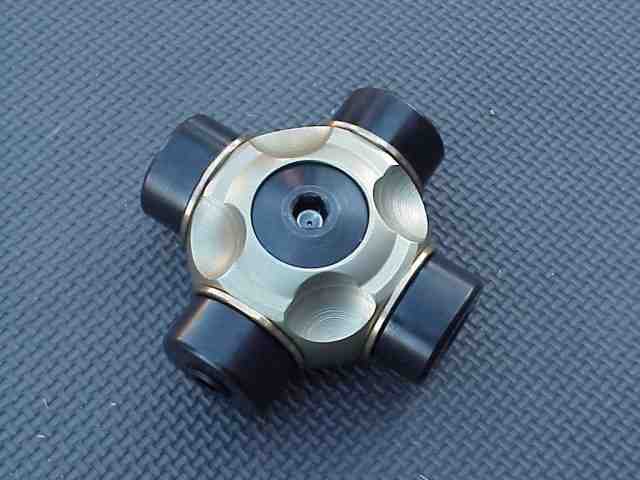
Compared to most u-joints, the Ox is a rather interesting gathering of metal parts. The main purpose of this u-joint is a simple one, no-breakage. It is another vendors response to the CTM u-joints that have become the standard for bullet-proof u-joints. I can’t say if the Ox joints will fair. MikeW is the first friend that has installed them and I honestly don’t know any other local Jeepers that run them. CTMs proved their durability in the competition world. Time will tell how the Ox u-joints hold up.
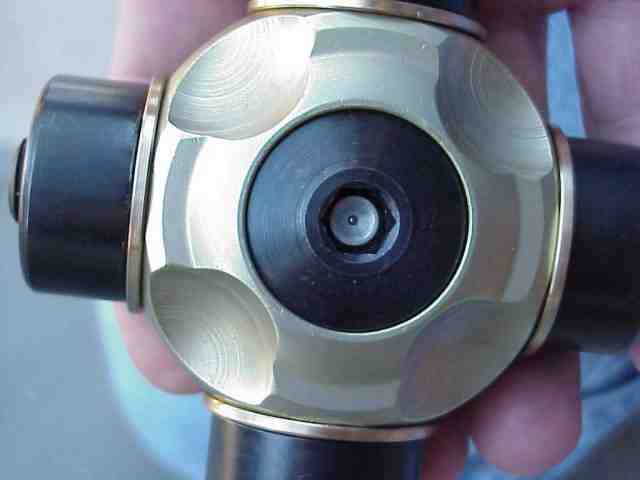
Unlike a regular u-joint where the cap is the only thing that can be removed, the Ox is a veritable u-joint Chinese puzzle. In the above picture, you can see the access cover in the center of the joint’s body. In the center of the access cover is a needle type grease fitting. The other side of the Ox has another access cover and grease fitting as well.


The trunion pins (black things that look like the cap on a regular u-joint) have a hex plug that screws into the end of them. When the trunion pins need to be removed from the axle shaft yoke ears, the plug is removed and an extractor is screwed into the trunion pin. The extractor pulls the pin out of the u-joint body and the yoke ear. Little did we know we would need this to also “adjust” the depth of the pins when assembling the axle shafts and the u-joint. (more on that later)
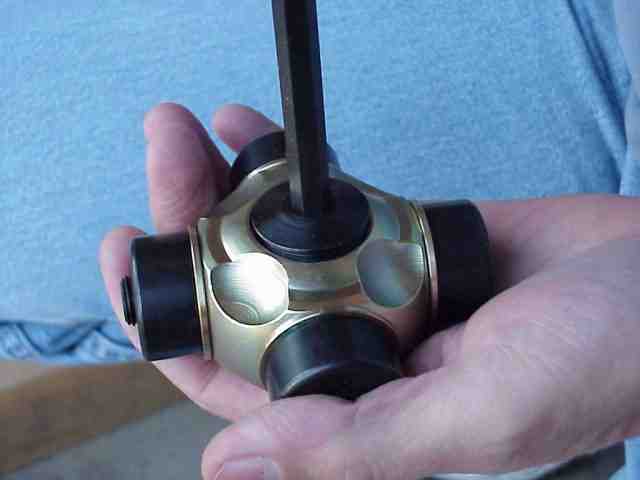
With an allen wrench in hand, the access cover is removed. Pretty simple up to this point….just gotta have a good sized allen wrench in your tool box.
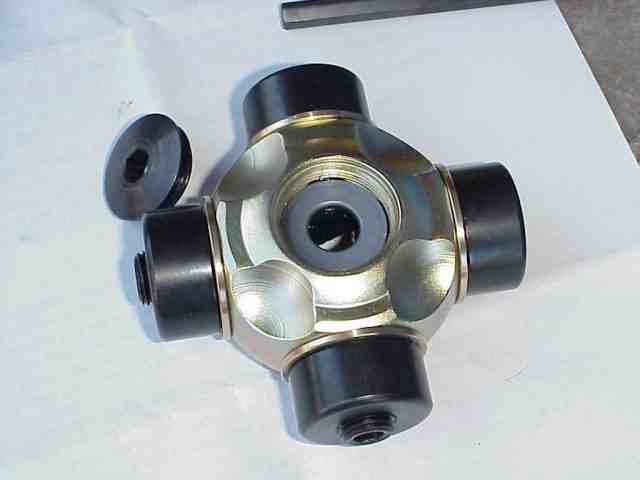
Beneath the cover is a retainer. The retainer (there is one on the other side of the body too) engages all four of the trunion pins and keeps them secure in the body of the u-joint.

Here is a picture of the retainer. You can see the 4 u-shaped notches in it that fit over the end of the four trunion pins. The Ox folks put a little grease in here just to keep things nicely coated. When the u-joint is assembled and ready to put into service, the entire body is filled with grease through the recessed needle fittings. We tried filling from one and both sides and found that the void in the body can be easily filled as long as you have access to one of the two grease fittings.

Here is a trunion pin, slightly greasy. It has an o-ring that forms a seal between the u-joint body and the pin itself. Note the machined end of the trunion pin. This is where the retainer secures the end of the pin. Without it, the pin would eventually work its way out of the yoke ears. This retaining system serves the same purpose as the c-clips that hold the end cap of a conventional u-joint in place once it is installed.

With the other access cover and its retainer removed, Mike pulled all of the trunion pins from the body and checked the fit on the Warn stub shaft. Mike’s 5 on 4.5″ Warn hub conversion was done about a year ago. Last month, we got together and pulled the hubs on both vehicles. It was time to grease the bearings and do a good eyeball inspection of everything. We were both happy to find no problems in either of our hub conversions. We replaced the seals and buttoned everything back up until next Christmas.

It was time to put the trunion pins through the ears on the stub shaft and get this thing put together. Mike broke out his Harbor Freight u-joint press and we put it in the bench vise. Mike was in charge of keeping the stub shaft lined up in the u-joint press and I provided the grunt work using a 1/2″ drive ratchet on the press. I use a socket between the u-joint press and the trunion pin. I believe it helps keep things a little better centered as the trunion cap starts into the yoke ear. I was correct 7 out of 8 times.

So…since this was the first time Mike and I had assembled the Ox u-joint, we kind of took our time. We didn’t want to push the trunion pins too far in because they would bind up the body in the yoke (we were warned about this in the OX install instructions). So, we would push a bit and then check the clearance by using the retainer. We had made a mental note of how the retainer fit (depth and amount of play) before we started assembly.
As luck would have it, we managed to push the trunion pin in a bit too far. The instructions say not to worry, just use the extractor to pull the trunion pin back a tiny bit. Of course, that would be great if you had an extractor. I would have thought that a $150 u-joint would have come with the necessary “tool” to take it apart once it was installed in an axle shaft. WRONG! A quick call to the 4×4 shop yielded confirmation that no, an extractor is not supplied with the u-joint and yes, they had them on order with an expected delivery date of 1 week.
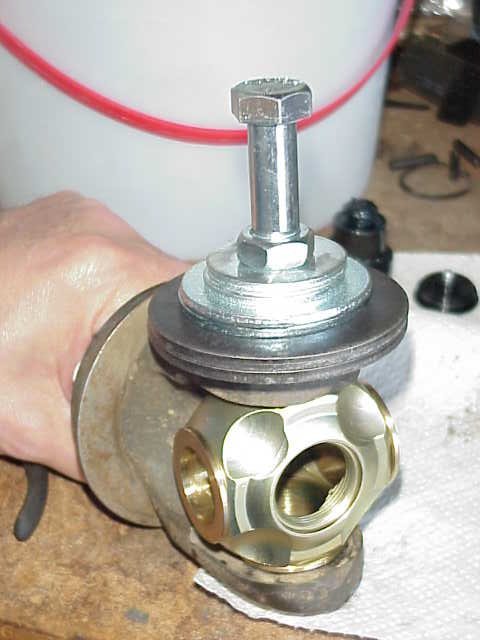
Hey….this was NOT going to stop us from getting Mike’s axle put into the D30 so off to the hardware store we went (as I was fresh out of milling machines to make an extractor). Less than $3 later, we had a prototype extractor ready to be tested. A couple of big washers, some smaller washers, and a jam nut to fit on a 1/2″x20 grade 5 bolt (the grade 8 selection was a little thin today) was deemed worthy of a try. The large washers created a little head room so we could turn the jam nut and pull the trunion pin out of the yoke. While this throw together $3 fix did the job, we both agreed that using it to completely remove all of the pins would be a pain. Mike decided to see about getting one machined by a friend.
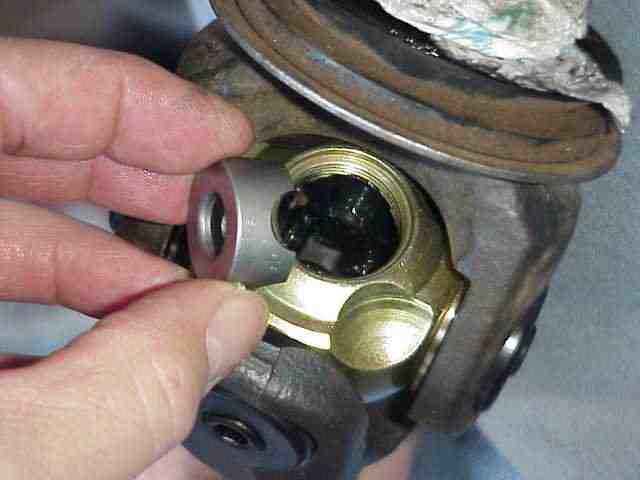
With the stub shaft and short side axle shaft attached to the u-joint, we double checked everything and then started to button the u-joint up. The retainers were inserted into the u-joint body.
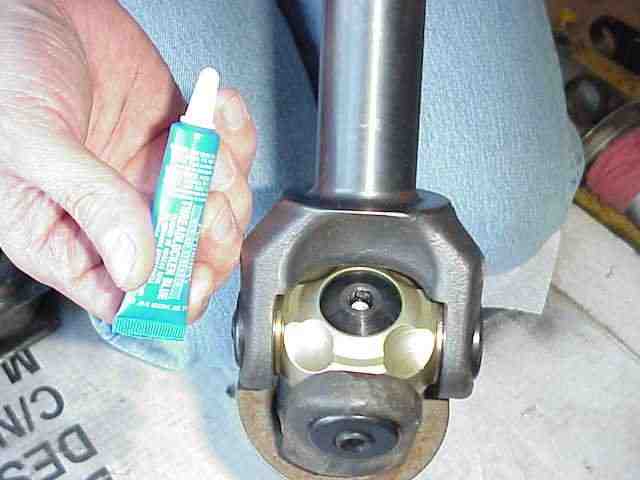
Ox recommends that you use some medium strength thread locker (Locktite or another brand) on the access covers. With some isopropyl alcohol that I keep in the garage for such things, we wiped down the threads on the covers and the body and then snugged down the covers into place.
With one side completed, we reinstalled the axle shaft into the axle tube, slipped the Warn hubs over the end of the stub shaft, and torqued the three 13mm hub bolts to spec. One side done and one side to go. Time for lunch! (we were having ribs and I wasn’t going to miss that!)
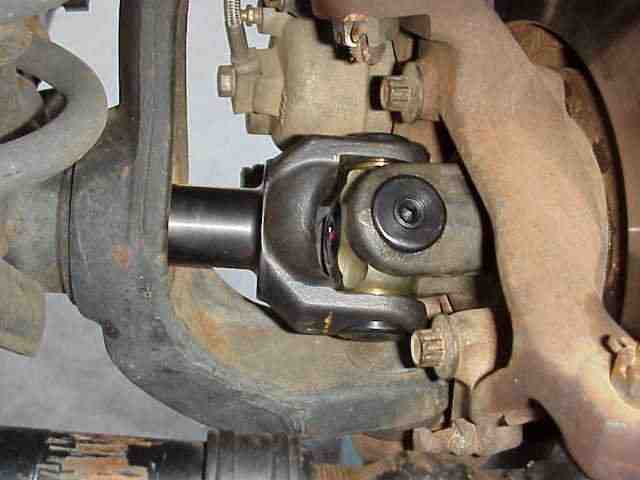
With lunch out of the way, I snapped a pic of the just finished shaft and we got started on the remaining side. As is usually the case, the 2nd side went worse than the first side (just kidding!) Once we got the far end of the inner shaft resting on a milk crate, assembly of the remaining u-joint went pretty well.
That is about it. I always wondered how the Ox u-joints worked and now I know. Since I share the local trails with Mike, he’ll keep me up to speed on how things go with the new setup. Just before he left, he wanted to know when we were getting back together so I could install my Ox u-joints. (I guess he is planning on getting some for me for my birthday? That is a true Jeep buddy!)
Remember to TREAD Lightly!
